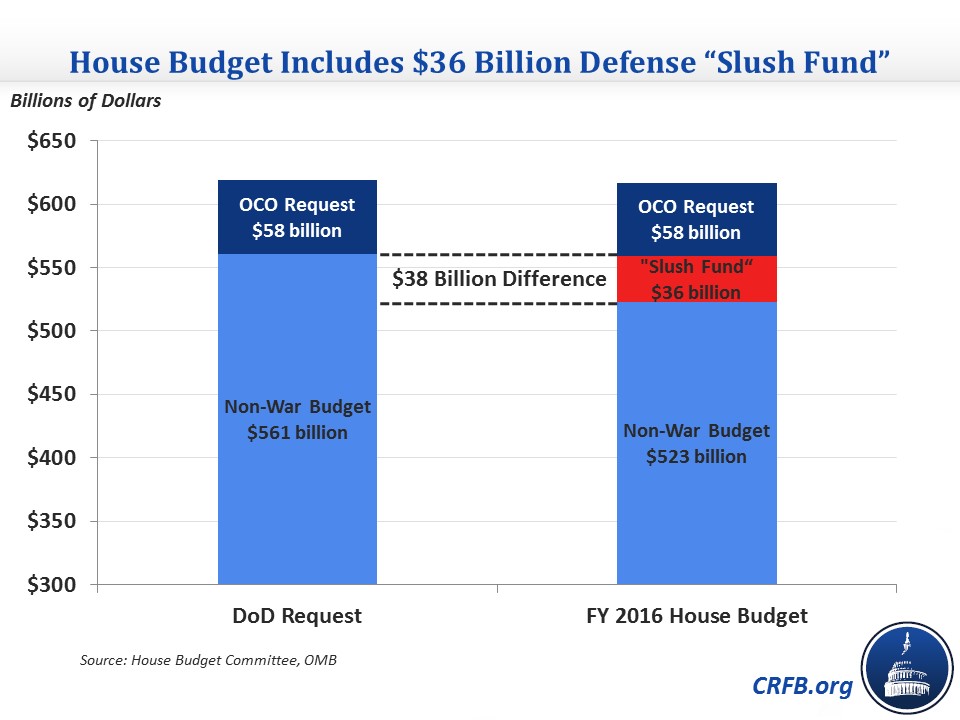Senate Budget Joins the House on Irresponsible War Spending
There was a lot of discussion in the run-up to the release of the Senate budget about disputes within the Republican caucus over defense spending. The original budget proved to be responsible compared to the House budget on defense, and particularly on war spending, but it took a clear step back during the mark-up yesterday. Here’s how.
As we’ve already discussed, the House budget took an irresponsible stance on war spending by spending in FY 2016 $36 billion above the President’s requested $58 billion, essentially to provide backdoor sequester relief for defense. It provided further sequester relief for defense by cutting non-defense discretionary spending below sequester levels, which may prove difficult to sustain over a long period of time.

The originally-released Senate budget took a more realistic and responsible approach on defense. For war spending, not only did it spend at the President’s request of $58 billion, but also it created a point of order, which could be overridden with 60 votes, against any bill that raises it above that amount. This enforcement was especially helpful considering that lawmakers spent $8 billion more than what the President requested in the CRomnibus last year.
But then came the mark-up, where an amendment passed to up the FY 2016 war spending level by $38 billion to exactly match the President's total defense request, providing a slightly larger slush fund than the House budget (while maintaining the point of order). It ostensibly pays for this increase by reducing the defense spending caps by $14 billion per year between 2022 and 2025, but it is not particularly credible to think that Congress would be unable to live with sequester-level spending in FY 2016 but could abide by below-sequester levels in years where no war spending is available.
For other defense spending, the Senate's budget is an improvement on the House budget as well. It adheres to sequester levels for the next ten years, and it also provides a deficit-neutral reserve fund to allow for changes in both defense and non-defense discretionary spending. In other words, it only allows sequester relief in the context of another Murray-Ryan-type agreement that fully offsets spending increases with other changes. This approach is more realistic that the House's reliance on sizeable future non-defense cuts.
The Senate budget's original take on defense was preferable to the House budget in both war spending and other defense spending. It prevented war spending from being turned into a defense slush fund and allowed for a process to lift the defense spending caps in a fiscally responsible and more realistic way. Ideally, lawmakers would strip the war spending slush fund in conference and use the Senate's deficit-neutral reserve fund for sequester relief in a join budget resolution.


